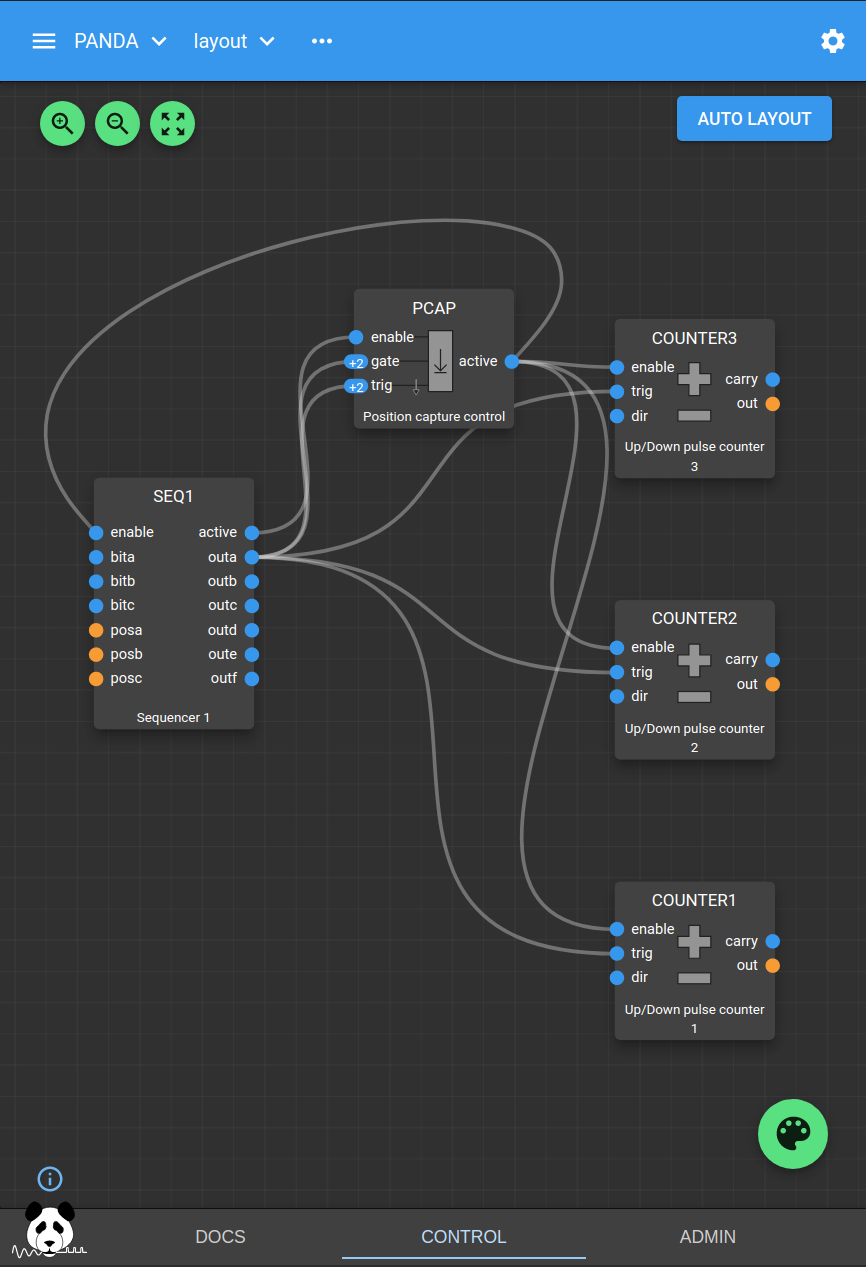Commandline Load/Save Tutorial#
This tutorial shows how to use the commandline tool to save the state of all the Blocks and Fields in a PandA, and load a new state from file. It assumes that you know the basic concepts of a PandA as outlined in the PandABlocks-FPGA blinking LEDs tutorial.
Save#
You can save the current state using the save command as follows:
$ pandablocks save <hostname> <save_file>
The save file is a text file containing the sequence of pandablocks control commands that will set up the PandA to match its state at the time of the save. This is a human readable file and may be edited if you want to modify a few fields.
e.g. the first few lines of the tutorial save file look like this:
OUTENC1.DATA.DELAY=0
OUTENC2.DATA.DELAY=0
OUTENC3.DATA.DELAY=0
OUTENC4.DATA.DELAY=0
OUTENC1.A.DELAY=0
OUTENC2.A.DELAY=0
OUTENC3.A.DELAY=0
OUTENC4.A.DELAY=0
OUTENC1.QPERIOD.UNITS=s
OUTENC2.QPERIOD.UNITS=s
OUTENC3.QPERIOD.UNITS=s
OUTENC4.QPERIOD.UNITS=s
Load#
To restore a PandA to a previously saved state use the load command as follows:
$ pandablocks load <hostname> <save_file>
This is equivalent to typing the sequence of commands in <save_file> into the pandablocks control command line.
To load the preconfigured tutorial state:
$ pandablocks load <hostname> --tutorial
The tutorial sets up a Seqencer block driving 3 Counter blocks and a Position Capture block. This configuration is the starting point for the next tutorial: Commandline Capture of HDF Files Tutorial
Note
The Web UI will not change the Blocks visible on the screen when you use
pandablocks load. If you want all the connected Blocks to appear in the
UI then restart the services on the PandA (Admin > System > Reboot/Restart)
The tutorial blocks are wired up as shown in the following Web UI layout.
